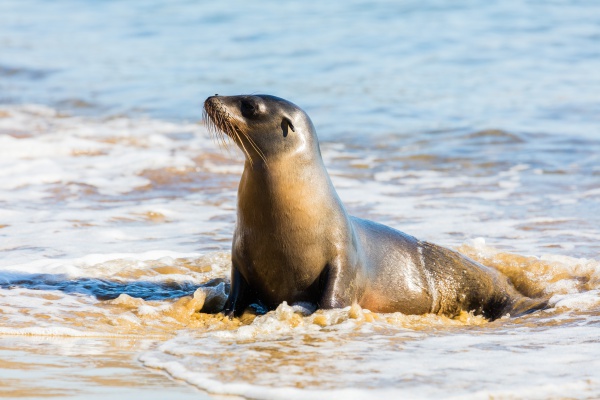Facts About Galápagos sea lion
The Galápagos sea lion, found on the Galápagos Islands and Isla de la Plata, is a captivating and playful marine mammal. These sea lions are renowned for their social behavior, frequently observed basking in the sun on shores or frolicking in the water. They are the smallest of all sea lion species and were first described in 1953. They belong to the family Otariidae and the genus Zalophus.
Physically, Galápagos sea lions are slightly smaller than their Californian counterparts, measuring between 1.5 to 2.5 meters in length. Males are larger than females and have distinguishing features such as thicker necks and more robust bodies. Both males and females have whiskered noses, long muzzles, and prominent external ear flaps. They are incredibly agile in the water, capable of controlling their flippers independently for swift maneuvers.
Their diet primarily consists of sardines, and they often travel long distances to hunt. However, they face dangers from predators such as sharks and killer whales. Their population can also decline during El Niño events due to changes in food availability. Socially, Galápagos sea lions are complex creatures. Dominant males defend territories and form harems, while breeding occurs from May to January. Pups rely on their mothers year-round, who provide extensive care, teaching them essential swimming and hunting skills. The bond between mother and pup is crucial for the pups' survival.
Unfortunately, Galápagos sea lions face several threats from human activities, including habitat disturbance, entanglement in fishing nets, and exposure to pollutants. Conservation efforts are in place to protect them, as the islands are part of an Ecuadorian national park with strict rules to prevent wildlife disturbance. However, challenges remain due to human population growth and its indirect impacts on sea lions.

 Peru
Peru